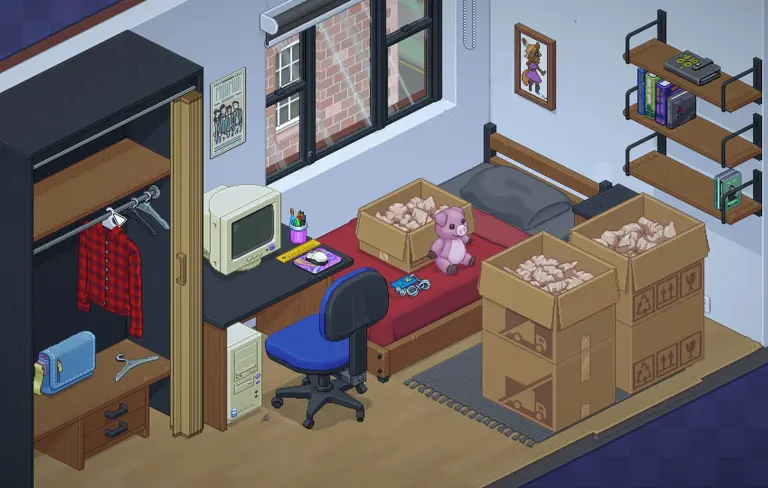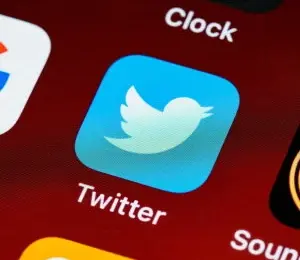As you may have seen in one of our Etch Play live shows, I recently joined Adam to talk all about Twitter virality and games. While I do recommend that you watch the clip (below) and see our wonderful faces for the full experience if you have the time, I have also put all our key discussion points into this handy blog. Enjoy!
What is Twitter? Most of us are fairly familiar with this trendy little social media platform, but for those who are not, I would describe it as a content discovery and discussion platform that, like many other social media, is based on interactions, algorithms and of course, virality.
Twitter is one of the core social media platforms of the games industry - it's the one place online where most of us "hang out" and you can see a representative presence across the board from all facets of the industry - game studios, publishers, influencers, content creators,, journalists, adjacent industries and more.
Not only is Twitter a great place to meet and learn from cool people working with games, but it's also a great platform to reach your players. With an average of 206 million daily users, Twitter has a vast range of different people, and players, for you to reach with your fresh game content.
So we know Twitter should be a consideration for your marketing arsenal as a game creator, publisher or game-adjacent professional, but one of the most common questions we get asked is: "How can I make my game go viral on Twitter, like that other game?"
Now, if this question had an easy answer, we wouldn't need a video discussion or this blog, and there would be dozens of games going viral on Twitter every week. Sadly the reality is that virality is very difficult to manufacture, and even more difficult to reproduce. However, while a lot of it is down to luck and timing, there are some things you can do to improve your chances of going viral. Let's consider some of these, by looking at a few examples.
Choo Choo Charles
Choo Choo Charles is a first-person horror game in which players must navigate an island in an old train, while trying to escape from a terrifying spider-train monstrosity. Created by Gavin Eisenbeisz, a solo indie developer going by the name Two Star Games, Choo Choo Charles was met with an incredible response on Twitter after a video tweet went viral.
A horror game where you navigate an island in an old train, upgrade it over time, and use it to fight an evil spider train named Charles. Here's the first trailer! (Steam link in comments) #Halloween #Horror #IndieGames #HorrorGames pic.twitter.com/Ug5GHIwXRm
— Two Star (@TwoStarGames) October 1, 2021
This video currently stands at over 1.3 million views, most of which were generated in the first few days of the tweet's publishing, as well as 90,000 wish lists on Steam within the first few weeks. This success was further supported by coverage from influencers and games media, who were amazed at the success.
Why do we think this worked? Firstly, it's unexpected. With hundreds of games being released every week across multiple platforms, it's becoming more and more difficult for studios to make their games stand out. A spider-train hybrid is not something that has been done before (to my knowledge) and so players are delighted when they find this unique little game. While the unexpectedness is part of Choo Choo Charles' success (in our opinion), what is equally helping it is the link it has to the overall online lore surrounding video games. How many of us have laughed at the Thomas the Tank Engine memes being made into mods for our favourite games like Skyrim? At this point, the Thomas meme is so ingrained in our collective game history, that seeing a game take the idea of trains showing up in games, and making something brand new out of it, is delightful and familiar.
Webbed
Going from absolutely terrifying to absolutely adorable, another game I've loved to watch on Twitter is the lovely Webbed, which is the story of a spider trying to rescue her boyfriend from a big, mean bird that kidnaps him.
Webbed's success was a little more measured - slowly but surely, content from the Sbug Games Twitter account began reaching tens of thousands of fans excited for the cute game. One video then generated over a hundred thousand views, showcasing the little protagonist building a fully functioning musical instrument out of webs, followed by another showing a new functionality of the rope physics, garnering an impressive 352,000 views (to this day).
Our little spider buddy is experimenting with making her own musical instruments!
— 🍂Sbug Games🍂 (@sbuggames) May 16, 2020
(🔊sound on)#gamedev #indiedev pic.twitter.com/7Uwns6OdYs
The video that really went viral, however, was the announcement video that showcased the game's new name, trailer and Steam page, leading to a very respectable 642,000 views since it's publishing.
Our little spider game now has a title: 🕸️WEBBED🕸️
— 🍂Sbug Games🍂 (@sbuggames) August 24, 2020
🕸️And a trailer!🕸️
🕸️And a Steam page!🕸️https://t.co/gAcWY4kgAJ
🕸️Please Wishlist! 🕸️ pic.twitter.com/EplwHWUhcT
This is the main piece of content that went viral, and what a treat it is! A delightful soundtrack, amazing web physics, adorable critter and a tense cliff hanger - everything you would want in an announcement trailer!
People absolutely loved it. Some fell in love with the adorable spider character, while others were really impressed with the design of the web physics. Why do we think it succeeded? A combination of these factors, as well as the overall appetite at the time for wholesome and pixel-art games, which had a huge renaissance over the first year of COVID-19.
Unpacking
Another wholesome, pixel game that was a viral hit on Twitter, designed around unpacking boxes, and putting things in their right (or wrong) spaces. This game and its content very much fall into what I call "game ASMR" - unpacking, tidying, putting everything in its right place - there is a real sense of satisfaction and zen in games like this, and people really love them. Some of this I think is especially tied to pandemic anxiety once again, but games like this have always been popular - just look at Animal Crossing, Stardew Valley, Harvest Moon and so on.

Unpacking is also a very simple concept to explain visually. The game mechanics can be immediately understood from a short clip of the game, and viewers can fairly quickly decide whether the game is for them.
Our Takeaways
While we wouldn't recommend trying to copy the success of these viral hits - because it just won't work - there are some things we can learn from them about the ingredients that could improve your chances of going viral.
A lot of it is down to luck, but it isn't all random chance! Try to think of the virality as a secondary potential purpose: the first thing you need to focus on is a high-quality product that can stand out against the competition. That in turn will improve your chances of going viral naturally. Choo Choo Charles has the unusual (and terrifyingly hilarious) villain. Webbed has an adorable protagonist and surprisingly in-depth web physics. Unpacking took something simple and made it beautiful, both visually and emotionally.
All these games also succeeded because they came out at the right time. This isn't something that will be easy to predict, but by staying up-to-date with themes and developments in the industry, you can improve your chances of doing something different, exciting and special when people are least expecting it.
Overall, remember that virality is not a prerequisite to marketing your game, nor is it the only path available to you. Chasing after virality can be a never ending search for awareness that could just as easily be acquired through more steady, organic marketing. A viral game is never viral out of nowhere, either. There will always be unseen hard work put in before that magical moment. As long as you've got your bases covered, that viral video, if it happens, could be lovely little cherry in top of your already-brilliant marketing cake.


